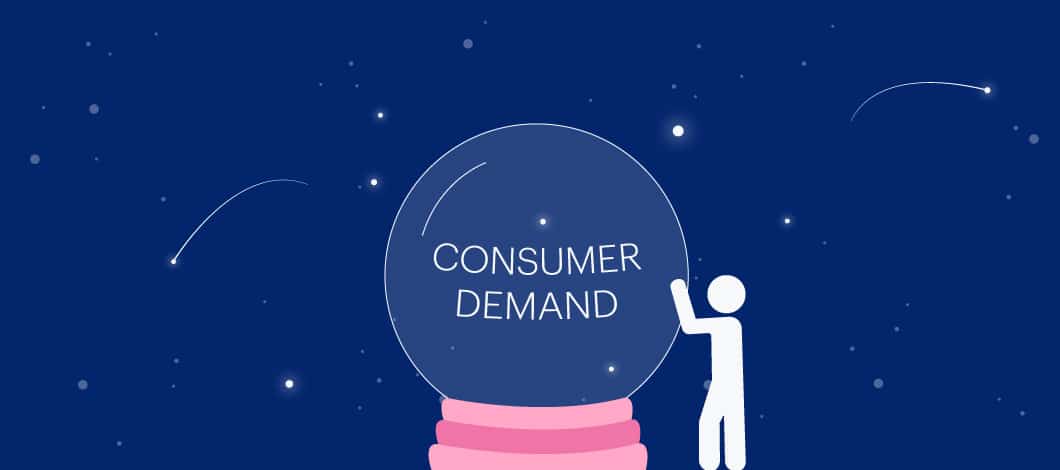With the ongoing integration of machine learning in business technology, business owners can better predict future outcomes with the data they have.
Relying on data measurements and intelligent algorithms instead of assumptions can help improve planning and optimize business strategies.
Here’s what you need to know about forecasting for your small business for 2022:
Forecast Definition in Business
What is forecasting in business? It’s the predicating of future outcomes indicative of business performance, such as sales numbers and marketing expenses. The data that goes into generating the predictions can come from conversion rates, past advertising expenditures, cost per sale, subscription renewal rate and other key performance indicators (KPIs).
Business forecasting software is able to generate predicted outcomes for a given period in the future and let you manage and automate your financial reporting.

The Benefits of Business Forecasting in 2022
Even startups need to do business forecasting to show prospective investors and help with budget creation. Why are cash-flow forecasts important to small businesses? Here are the benefits and uses of business forecasting:
Inform Lucrative Decisions
The main purpose of business forecasting is to determine the feasibility of your plans, such as the budgets you set. Forecasts can also predict the demand that exists for a new product idea, identify seasonal sales trends and glean other insights from your data that could help you grow strategically.
Another thing business forecasts help with is optimizing resource allocation to maximize returns on investments (ROIs) and increase your bottom line.
Get Investors on Board
If you’re a startup or a new business looking for investors to help you grow, you’ll need a financial report.
You can use business forecasting software and the data you have to generate the report automatically by customizing the business forecast template you choose. Having your financial forecast in business plan format is the best way to show prospective investors or partners your predicted sales numbers and other forecasts that might pique their interest in investing.
Identify Potential Problems
Expecting increased costs or higher seasonal demand? Be prepared and identify potential problems sooner based on predicted outcomes.
Check your forecasted profit and the expected ROI for each marketing strategy and advertising campaign. By mapping out what to expect ahead, you can be more agile and able to adapt to changing circumstances.
Budget More Accurately
Accurate budgeting is critical for small business sustainability. Business forecasting software can help you make better marketing and sales budgets. By being able to forecast future demand, you can more accurately order your supply and improve cost efficiency.
Track recurring marketing and sales expenses and predict future sales volumes to determine the ROIs of each strategy you’re invested in. You can set goals for the ROIs you want to see and tailor your budget around meeting them.
Business Forecasting Techniques for Small Businesses in 2022
Now that a new year has begun, you want to make sure you’re capturing all the 2022 data required for the predictions you want to generate. First, you’ll need to choose what forecasting techniques to use.
Economic forecasting for business involves generating estimations for outcomes in an unknowable future and there are different ways to arrive at the estimations based on how you analyze the data.
Predictive modeling techniques can be quantitative or qualitative. The type you use will typically depend on what outcome you want to forecast.
For example, sales numbers would require a quantitative model generated by “crunching the numbers.”
On the other hand, future projections on consumer demand probably need a qualitative one. Qualitative methods also are helpful for startups with limited data history, because they can rely on competitor data to generate short-term predictions.
Quantitative Techniques in Business Forecasting
Quantitative business forecasting is a method for predicting sales numbers, profits and other quantitative outcomes. Here are the different techniques you can use:
Trend Analysis
Analyzing trends over time helps you predict future outcomes based on historical data. The more data history you have in your financial records, the clearer your sales trends will become. These help inform more accurate predictions of seasonal demand fluctuations and other recurring trends.
You can use trend analysis to spot areas of your business projected to underperform so that you’re prepared to respond and compensate for the dip in sales.
Econometric Modeling
The econometric approach to forecasting is the most mathematically precise method for modeling data. It pools data into complex algorithms to generate financial predictions and other numerical data. When you forecast sales numbers using econometric modeling, you forecast sales for each product you sell for the most precise data.
Business forecasting software is able to generate visual charts based on econometric data analytics and help give you a big-picture view of your business’s growth and forecasts.
Indicator Technique
Another quantitative forecasting method is to look at your key performance indicators (KPIs) in relation to one another to improve.
This technique works by improving the accuracy of the other KPIs and generating more accurate insight from predictive algorithms.
Qualitative Techniques in Business Forecasting
Qualitative business forecasting is a little bit more limiting in its accuracy, but it’s the best business forecasting process to use if you don’t have enough sales data. Using data from the businesses already succeeding in your industry, qualitative models can provide useful insights with statistics.
Market Research
Market research is an approach to business forecasting typically used in the startup phase to measure consumer interest in a product or service.
Even for businesses that have been open for a while, market research can help inform changing trends in consumer demand before it affects your business significantly. It’s done by surveying consumers directly using polls and questionnaires and can be helpful in presenting your startup to prospective investors.
The Delphi Method
The Delphi method, or “visionary forecasting,” involves aggregating insight from a panel of experts who answer questionnaires to input their opinions. With the help of software, the expert opinions are compiled to generate one unified prediction for a given future outcome.
This method helps measure subjective information about the future and is particularly effective when market trends play a large role in your industry.
Business Forecasting Examples
Here are some examples of business forecasting techniques in action to inspire you:
Expectations Survey
Survey expectations for how a product will do on the market by asking your customers and your sales force to fill out questionnaires. Aggregating this data can identify popular opinions and provide a “grassroots forecast” of a product’s reception on the market.
If you can, give a sample experience of your product or service to a pool of beta testers who represent your target customer. This is a great qualitative forecasting technique to use for startups launching new products with negligible sales history. To do a split test on two variants of a product, give them to two groups of beta testers and garner feedback to find the more desirable product features.
Market Segmentation
Market segmentation is a quantitative forecasting technique that helps you get more specific with your econometric data. From a marketing perspective, not every customer will cost the same to acquire, so different customer groups should ideally be accounted for in your forecasting reports.
Divide your target customer base into segments based on differences like demographics, geographic location and other factors that might affect how you approach marketing. For example, if selling a product, you could forecast sales performance for each age group in your consumer base. If you provide an international service online, you might forecast the profit generated from each country serviced to help you better manage resources.
Structured Analogies
A structured analogy is a qualitative forecasting method achieved through the help of qualified experts who weigh in on what they predict. Ideal for new companies without sales data, it works by comparing historical data in your market with your business to create a forecast.
Provide a questionnaire and sample of your product or service to a panel of experts with market knowledge and experience. Use their feedback to generate a consensus regarding how a product will perform based on the past. Not only can it gauge consumer interest but also expected sales performance.
Business Forecasting Effectively for Small Businesses in 2022
Business forecasting helps small business owners create forecast reports and make smarter decisions based on predicted futures. The uses of forecast in business management are endless. With market data and your own data history, business forecasting tools can help you optimize your budgets and expand your profit margins.
With artificial intelligence (AI) and machine learning algorithms built into today’s data analytics software, small businesses can benefit from customer demand predictions and seeing forecasted sales numbers.











